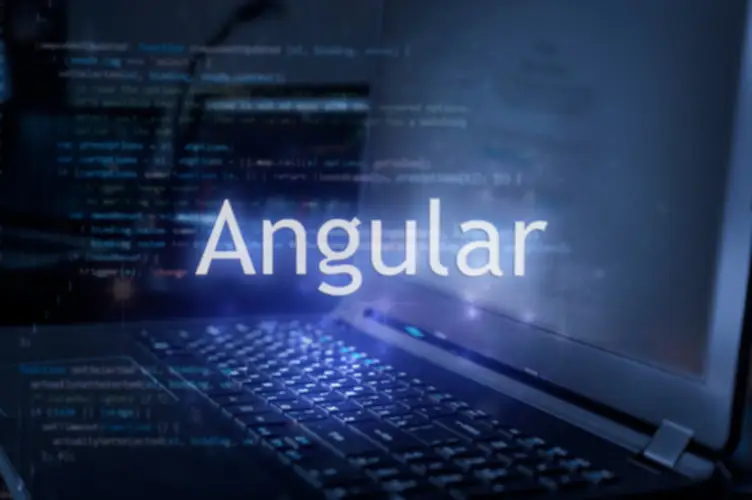Delicate data, corresponding to affected person info or enterprise-generated data, could be processed locally instead of being transmitted to the cloud. This ensures higher control over data and helps meet regulatory necessities for data sovereignty. A trendy metropolis capabilities like a residing organism, with edge computing serving as its nervous system. Every a part of town makes its own sensible selections, somewhat than sending every bit of data to a central mind.
It prioritizes proximity to the info source and might maintain computing sources either inside the identical space as the data source or somewhere shut. Edge computing bridges the gap between knowledge processing and information generation to attain faster outcomes. This information discusses the examples, use circumstances, benefits and drawbacks of edge computing. AWS for the Edge brings the world’s most capable and safe edge computing definition cloud nearer to your endpoints and users. AWS is the only provider that extends infrastructure, providers, APIs, and tools supplied in the cloud as a completely managed service to just about any on-premises data heart, co-location area, or edge facility. Examples embrace stay video streaming in media and leisure, online gaming, or digital actuality video feeds.
The subsequent sections provide an in-depth take a look at the standard information dealing with process, the challenges faced by conventional information facilities, and the core concept of edge computing. Adopting edge computing is a excessive precedence for many telco service suppliers as they modernize their networks and seek new sources of revenue. Specifically, many service providers are moving workloads and providers out of the core community (in datacenters) towards the network’s edge, to factors of presence and central offices. Industries like healthcare (for real-time patient monitoring), manufacturing (for machine maintenance), and good cities (for traffic control) benefit from edge computing. Using hybrid networks with distributed intelligence makes these systems much more efficient. The telco sector alternative that is still to be seen is said to the fact that with 5G, a lot is about to occur in the subsequent years anyway so the momentum could be there.
Builders of edge-dependent purposes may also be extra incentivized to ramp things up if they were confident that infrastructure builders have been investing massive in the edge, Satyanarayanan explained. However edge computing creators likewise need to see that very same demonstrable dedication from builders. Despite an ever-increasing number of computing gadgets and key early-stage features by edge companies, Satyanarayanan said edge computing remains to be in a holding pattern.
Edge computing might be a game-changer for the banking and financial sector. It is a properly known proven reality that banks hold huge amounts of private knowledge that require greater bandwidth capability and storage space for safekeeping. Shifting information processing near banks may generate faster and secure banking experiences for purchasers. Banks can even utilize edge computing to research ATM video feeds in real-time and guarantee extra safety. Companies can now harness the facility of complete information analysis by adopting a massively decentralized laptop infrastructure in edge computing. The edge computing framework keeps knowledge close to the source, whereas 5G technology’s lightning-fast speed will get the information to its desired location as rapidly as attainable.
- With the rising number of web of issues (IoT) units, securing every edge device and guaranteeing protected communication between them turns into complex.
- In sectors like healthcare or finance, the place privacy is a major concern, edge computing allows knowledge to be analyzed and saved at the gadget level, minimizing the danger of unauthorized access.
- Over the years, the unprecedented quantity of computing power and connected devices have accumulated vast amounts of information, causing a massive pressure on the already congested web.
- Edge computing transforms industrial automation by enabling native knowledge processing for fast decision-making.
Edge Computing Providers
Edge computing is beneficial the place connectivity is unreliable or bandwidth is restricted because of the location’s environmental traits. Examples embody oil rigs, ships at sea, distant farms or different remote places, corresponding to a rainforest or desert. Edge computing does the compute work on site — sometimes on the edge system itself — such as water high quality sensors on water purifiers in distant villages, and can save information to transmit to a central point solely when connectivity is on the market.
Edge computing presents enhanced safety and privateness by processing delicate knowledge regionally, quite than transmitting it over lengthy distances to centralized cloud servers. This reduces the publicity of data to potential breaches throughout transmission. In sectors like healthcare or finance, the place privateness is a big concern, edge computing allows information to be analyzed and stored at the device level, minimizing the danger of unauthorized entry. For instance, a healthcare wearable system can monitor a patient’s vitals and make choices based on this knowledge without sending delicate personal information to the cloud. This selective approach not solely reduces bandwidth consumption but in addition enhances security by limiting the exposure of delicate information. Edge computing’s architecture creates a more environment friendly and responsive infrastructure.
Edge computing is an important part of modern community architecture, solving problems that conventional centralized computing struggles to handle. It’s significantly essential for linked units, good buildings, and IoT ecosystems, providing businesses faster, more secure, and cost-effective methods to handle data. The SP Edge takes this concept and, on a smaller scale, delivers services throughout the worldwide fastened networking infrastructure, often within the form of as-a-service solutions. It largely utilizes fastened and personal networks established by Communications Service Providers (CSPs), a lot of whom are actively deploying each edge services and 5G technologies. The two primary classes of edge computing are the Service Supplier Edge and the Person Edge.
One instance of such future options is the development of micro modular knowledge facilities (MMDCs). Furthermore, securing the communication between units, gateways, and distant servers is critical to prevent man-in-the-middle assaults. By utilizing safe communication protocols, similar to Transport Layer Safety (TLS), and ensuring that knowledge is authenticated and integrity-checked, organizations can safeguard knowledge as it strikes through the network.

Edge Computing Vs Cloud Computing
Edge computing offers an unprecedented alternative for enterprises and service suppliers to unlock the value in knowledge. With the best companion, a company can take advantage of out of data at every level. Intel—with tens of thousands of edge deployments generating actual value, hundreds of market-ready solutions, standards-based expertise, and the world’s most mature developer ecosystem—can allow you to make the clever edge actual.

IoT units brought-in so much data that even seemingly boundless computing capabilities of the cloud weren’t enough to maintain an instantaneous course of and timely outcomes. This is unhealthy news in the case of data-reliant devices similar to self-driving cars. Latency refers to the time required to switch data between two factors on a network. Massive physical distances between these two points coupled with network congestion may cause delays. As edge computing brings the points nearer to each other, latency issues are just about nonexistent.
Edge computing is a straightforward idea that might look simple on paper, however growing a cohesive strategy and implementing a sound deployment on the edge is normally a challenging exercise. Make sure there’s an easy https://www.globalcloudteam.com/ method to govern and implement the insurance policies of your enterprise.
For instance, think about healthcare techniques that monitor patients’ important Software engineering signs in real time. With local knowledge handling, edge computing not only improves response instances but additionally enhances security and reduces the load on central servers, making it extra efficient. However, this revolutionary approach also introduces challenges, similar to managing decentralized networks and guaranteeing seamless communication between units. With these advantages and hurdles in mind, let’s explore how edge computing is poised to shape the way ahead for IoT. In contrast, edge processing digests information regionally, enabling units to analyze and make decisions virtually instantly, reducing latency to milliseconds.
In general, distributed computing models are hardly new, and the ideas of remote places of work, department places of work, knowledge center colocation and cloud computing have a protracted and proven track report. Edge computing is the deployment of computing and storage resources at the location the place data is produced. This ideally puts compute and storage on the similar point as the information source on the network edge. For example, a small enclosure with several servers and a few storage might be installed atop a wind turbine to gather and course of information produced by sensors inside the turbine itself. As one other instance, a railway station may place a modest quantity of compute and storage inside the station to collect and course of myriad track and rail traffic sensor information. The results of any such processing can then be sent back to a different knowledge middle for human review, archiving and to be merged with different knowledge results for broader analytics.
